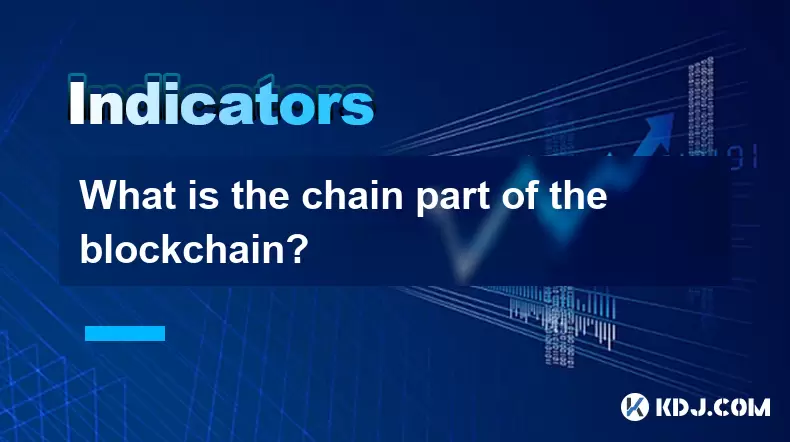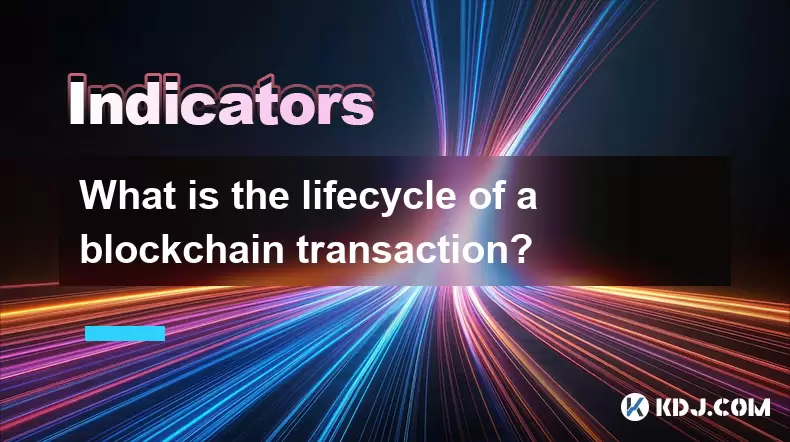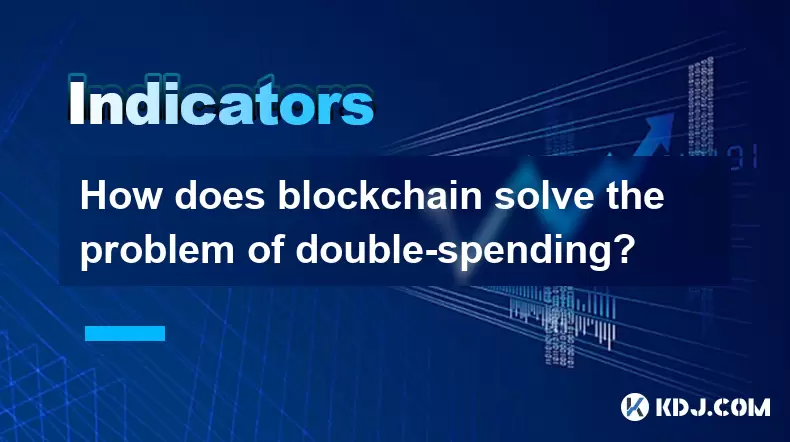-
 Bitcoin
Bitcoin $112400
-1.07% -
 Ethereum
Ethereum $3409
-3.27% -
 XRP
XRP $2.784
-6.60% -
 Tether USDt
Tether USDt $0.9997
-0.03% -
 BNB
BNB $739.3
-2.09% -
 Solana
Solana $158.0
-2.90% -
 USDC
USDC $0.9998
-0.02% -
 TRON
TRON $0.3213
-0.94% -
 Dogecoin
Dogecoin $0.1929
-5.01% -
 Cardano
Cardano $0.6974
-2.82% -
 Hyperliquid
Hyperliquid $36.69
-2.31% -
 Sui
Sui $3.327
-4.80% -
 Stellar
Stellar $0.3672
-5.18% -
 Chainlink
Chainlink $15.65
-3.07% -
 Bitcoin Cash
Bitcoin Cash $525.0
-1.68% -
 Hedera
Hedera $0.2291
-6.00% -
 Avalanche
Avalanche $20.91
-2.96% -
 Ethena USDe
Ethena USDe $1.000
0.00% -
 Toncoin
Toncoin $3.520
-1.12% -
 UNUS SED LEO
UNUS SED LEO $8.968
0.14% -
 Litecoin
Litecoin $105.7
0.26% -
 Shiba Inu
Shiba Inu $0.00001181
-1.79% -
 Polkadot
Polkadot $3.492
-2.08% -
 Uniswap
Uniswap $8.800
-3.10% -
 Dai
Dai $0.9999
-0.01% -
 Monero
Monero $289.9
-3.17% -
 Bitget Token
Bitget Token $4.243
-1.27% -
 Pepe
Pepe $0.00001006
-3.67% -
 Cronos
Cronos $0.1248
-5.68% -
 Aave
Aave $249.7
-2.50%
How to operate when the moving average converges and then diverges? Has the direction been chosen?
Use MACD in crypto trading by monitoring its line, signal, and histogram to spot trends and reversals, always confirming with price action and other indicators.
Jun 04, 2025 at 03:14 pm

When dealing with the moving average convergence and divergence (MACD) indicator in the realm of cryptocurrency trading, understanding how to operate effectively can significantly enhance your trading decisions. The MACD is a trend-following momentum indicator that shows the relationship between two moving averages of a cryptocurrency's price. The key to using the MACD effectively lies in interpreting its signals to determine whether a trend is strengthening or weakening, which can help in choosing the direction of your trades.
Understanding MACD Components
The MACD consists of three key components: the MACD line, the signal line, and the histogram. The MACD line is calculated by subtracting the 26-period exponential moving average (EMA) from the 12-period EMA. The signal line is a 9-period EMA of the MACD line. The histogram represents the difference between the MACD line and the signal line, visually indicating the momentum of the price movement. When the MACD line crosses above the signal line, it is considered a bullish signal, suggesting a potential upward trend. Conversely, when the MACD line crosses below the signal line, it is considered a bearish signal, indicating a potential downward trend.
Identifying Convergence and Divergence
Convergence and divergence are essential concepts in using the MACD. Convergence occurs when the MACD line and the price of the cryptocurrency move in the same direction. This can signal that the current trend is likely to continue. Divergence, on the other hand, happens when the MACD line and the price of the cryptocurrency move in opposite directions. There are two types of divergence: bullish divergence and bearish divergence. Bullish divergence occurs when the price makes a lower low, but the MACD makes a higher low, suggesting a potential reversal to the upside. Bearish divergence is when the price makes a higher high, but the MACD makes a lower high, indicating a potential reversal to the downside.
Operating When the MACD Converges
When the MACD converges, it suggests that the current trend is strong and likely to continue. Here’s how you can operate in such a scenario:
- Monitor the MACD Line and Signal Line: Keep an eye on the MACD line and signal line. If the MACD line is above the signal line and both are trending upwards, it is a strong indication of a bullish trend. Conversely, if the MACD line is below the signal line and both are trending downwards, it indicates a bearish trend.
- Use the Histogram: The histogram can provide additional confirmation. An increasing histogram in a bullish trend or a decreasing histogram in a bearish trend reinforces the strength of the trend.
- Confirm with Price Action: Always confirm the MACD signals with price action. Look for higher highs and higher lows in a bullish trend, and lower highs and lower lows in a bearish trend.
Operating When the MACD Diverges
Divergence signals potential trend reversals, and operating during these periods requires careful analysis:
- Identify Bullish Divergence: Look for instances where the price is making lower lows, but the MACD is making higher lows. This could be a sign to enter a long position, anticipating an upward reversal.
- Identify Bearish Divergence: Watch for situations where the price is making higher highs, but the MACD is making lower highs. This might be an opportunity to enter a short position, expecting a downward reversal.
- Wait for Confirmation: Divergence alone is not enough to make a trading decision. Wait for additional confirmation from other indicators or price action, such as a breakout from a key support or resistance level.
Choosing the Direction Based on MACD Signals
The direction of your trade is determined by the signals provided by the MACD. When the MACD line crosses above the signal line, it is a bullish signal, suggesting that you should consider buying or going long. When the MACD line crosses below the signal line, it is a bearish signal, indicating that you should consider selling or going short. However, always ensure that these signals are confirmed by other indicators and price action to increase the probability of a successful trade.
Practical Example of Operating with MACD
Let's consider a practical example to illustrate how to operate with the MACD in a real-world scenario. Suppose you are analyzing the price chart of Bitcoin (BTC) and you notice the following:
Bullish Signal: The MACD line crosses above the signal line, and the histogram is increasing. The price of BTC is making higher highs and higher lows.
- Action: This is a strong bullish signal. You could consider entering a long position, buying BTC at the current price.
- Confirmation: Look for additional confirmation from other indicators, such as the Relative Strength Index (RSI) showing an oversold condition or a breakout above a key resistance level.
Bearish Signal: The MACD line crosses below the signal line, and the histogram is decreasing. The price of BTC is making lower highs and lower lows.
- Action: This is a strong bearish signal. You could consider entering a short position, selling BTC at the current price.
- Confirmation: Confirm with other indicators, such as the RSI showing an overbought condition or a breakdown below a key support level.
Frequently Asked Questions
Q1: Can the MACD be used as a standalone indicator for trading decisions?
A1: While the MACD is a powerful tool, it is generally recommended to use it in conjunction with other indicators and price action analysis. Relying solely on the MACD can lead to false signals and missed opportunities. Combining it with tools like the RSI, Bollinger Bands, or candlestick patterns can provide a more comprehensive view of the market.
Q2: How often should I check the MACD for trading signals?
A2: The frequency of checking the MACD depends on your trading style. For day traders, checking the MACD every few minutes to hours can be beneficial. Swing traders might check it on a daily or even weekly basis. It’s important to align your MACD monitoring with your trading timeframe and strategy.
Q3: Is the MACD more effective in certain market conditions?
A3: The MACD can be effective in both trending and ranging markets. In trending markets, the MACD can help identify the strength and continuation of the trend. In ranging markets, it can signal potential breakouts or breakdowns. However, its effectiveness can vary depending on the volatility and liquidity of the cryptocurrency being traded.
Q4: How can I adjust the MACD settings for different cryptocurrencies?
A4: The standard settings for the MACD are 12, 26, and 9 periods for the fast EMA, slow EMA, and signal line, respectively. However, these settings can be adjusted based on the volatility and trading characteristics of different cryptocurrencies. For highly volatile cryptocurrencies, you might want to use shorter periods to capture quicker signals. For less volatile cryptocurrencies, longer periods might be more suitable to filter out noise and focus on more significant trends. Always test different settings on historical data to find what works best for your specific trading strategy.
Disclaimer:info@kdj.com
The information provided is not trading advice. kdj.com does not assume any responsibility for any investments made based on the information provided in this article. Cryptocurrencies are highly volatile and it is highly recommended that you invest with caution after thorough research!
If you believe that the content used on this website infringes your copyright, please contact us immediately (info@kdj.com) and we will delete it promptly.
- Bitcoin Liquidity, Osmosis Zone, and Investor Interest: A Deep Dive
- 2025-08-03 15:16:44
- Web3, Sports, and Computing Power: A New Ballgame
- 2025-08-03 15:16:44
- Ethereum, Altcoin Surge, and the MAGACOIN Presale: What's the Buzz?
- 2025-08-03 15:16:44
- Crypto Whales, Meme Coins, and Moonshots: Navigating the Wild West of 2025
- 2025-08-03 15:16:44
- Hong Kong Stablecoin Licenses: A Tight Squeeze?
- 2025-08-03 15:16:45
- Dogecoin's Bullish Signals: Engulfing Candle and Whale Accumulation Point to Potential Surge
- 2025-08-03 15:16:45
Related knowledge

What is a light client in blockchain?
Aug 03,2025 at 10:21am
Understanding the Role of a Light Client in Blockchain NetworksA light client in blockchain refers to a type of node that interacts with the blockchai...

Is it possible to alter or remove data from a blockchain?
Aug 02,2025 at 03:42pm
Understanding the Immutable Nature of BlockchainBlockchain technology is fundamentally designed to ensure data integrity and transparency through its ...

How do I use a blockchain explorer to view transactions?
Aug 02,2025 at 10:01pm
Understanding What a Blockchain Explorer IsA blockchain explorer is a web-based tool that allows users to view all transactions recorded on a blockcha...

What is the chain part of the blockchain?
Aug 02,2025 at 09:29pm
Understanding the Concept of 'Chain' in BlockchainThe term 'chain' in blockchain refers to the sequential and immutable linkage of data blocks that fo...

What is the lifecycle of a blockchain transaction?
Aug 01,2025 at 07:56pm
Initiation of a Blockchain TransactionA blockchain transaction begins when a user decides to transfer digital assets from one wallet to another. This ...

How does blockchain solve the problem of double-spending?
Aug 03,2025 at 07:43am
Understanding the Double-Spending Problem in Digital TransactionsThe double-spending problem is a critical issue in digital currencies, where the same...

What is a light client in blockchain?
Aug 03,2025 at 10:21am
Understanding the Role of a Light Client in Blockchain NetworksA light client in blockchain refers to a type of node that interacts with the blockchai...

Is it possible to alter or remove data from a blockchain?
Aug 02,2025 at 03:42pm
Understanding the Immutable Nature of BlockchainBlockchain technology is fundamentally designed to ensure data integrity and transparency through its ...

How do I use a blockchain explorer to view transactions?
Aug 02,2025 at 10:01pm
Understanding What a Blockchain Explorer IsA blockchain explorer is a web-based tool that allows users to view all transactions recorded on a blockcha...

What is the chain part of the blockchain?
Aug 02,2025 at 09:29pm
Understanding the Concept of 'Chain' in BlockchainThe term 'chain' in blockchain refers to the sequential and immutable linkage of data blocks that fo...

What is the lifecycle of a blockchain transaction?
Aug 01,2025 at 07:56pm
Initiation of a Blockchain TransactionA blockchain transaction begins when a user decides to transfer digital assets from one wallet to another. This ...

How does blockchain solve the problem of double-spending?
Aug 03,2025 at 07:43am
Understanding the Double-Spending Problem in Digital TransactionsThe double-spending problem is a critical issue in digital currencies, where the same...
See all articles

























































































